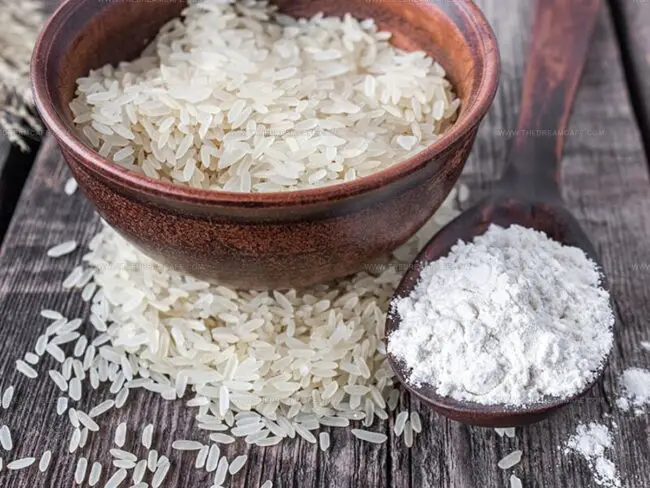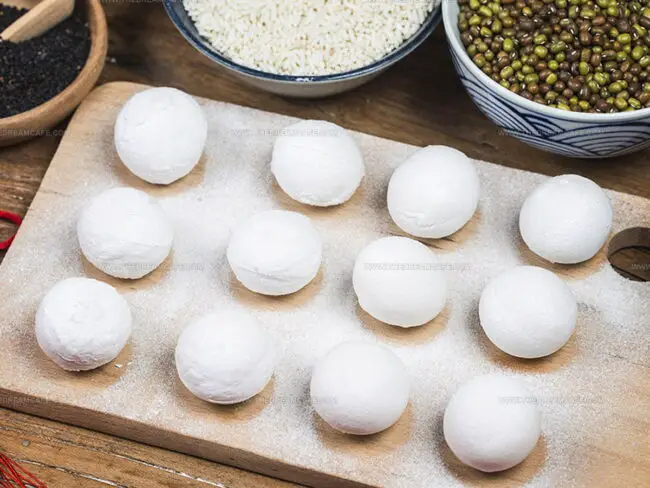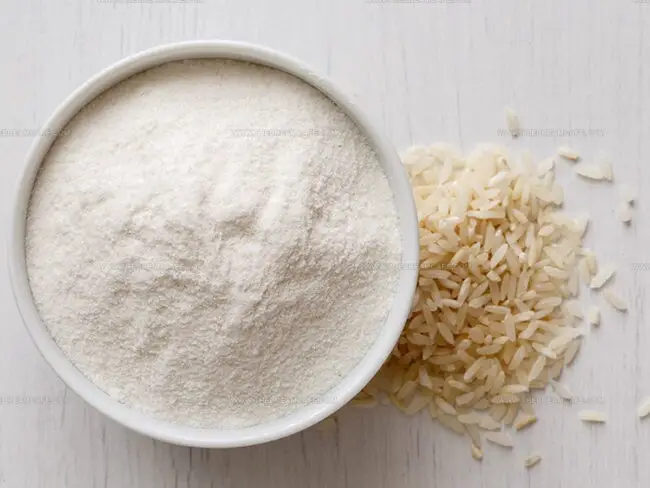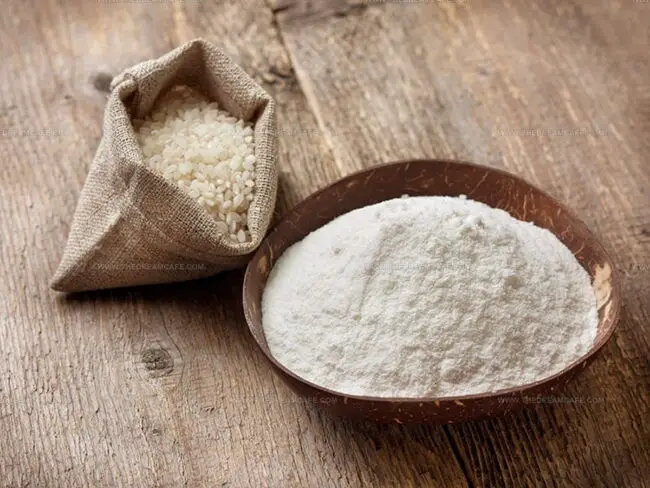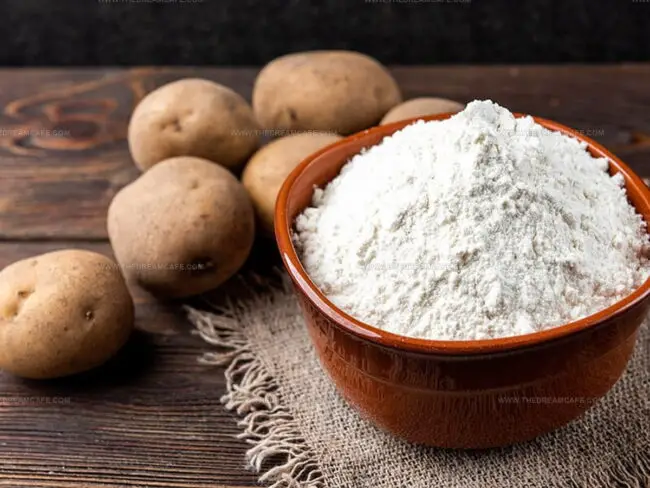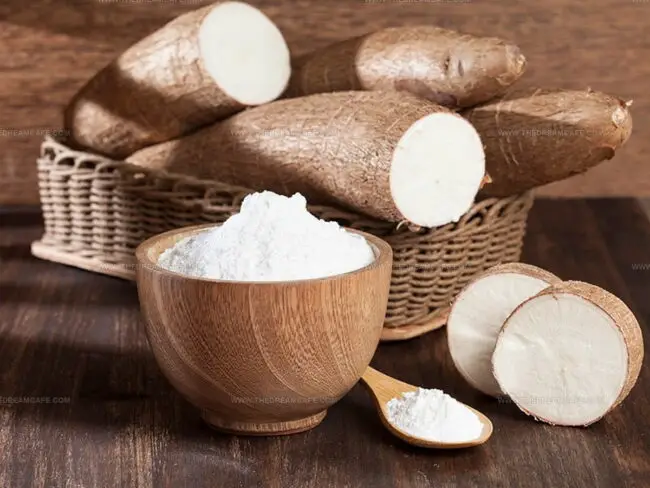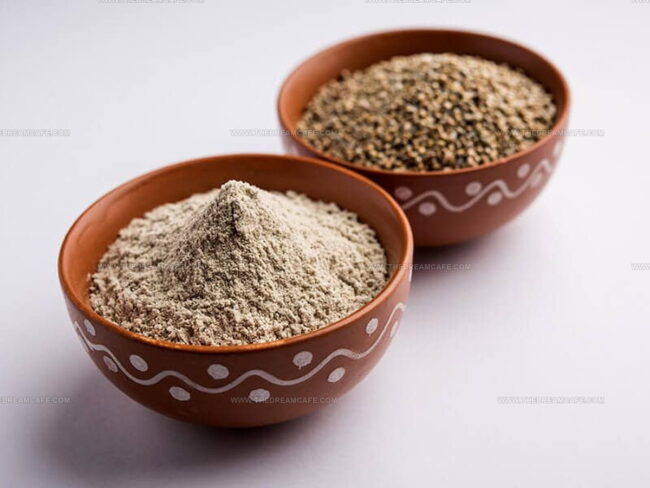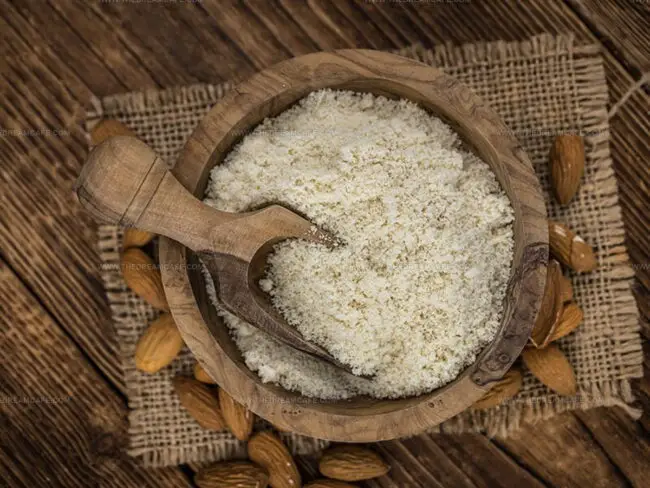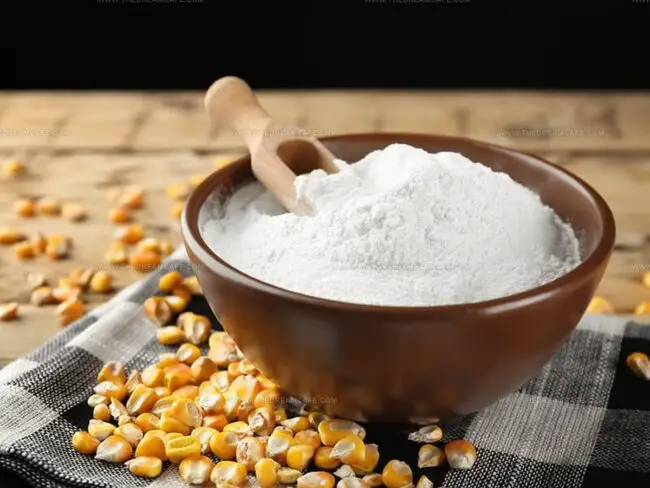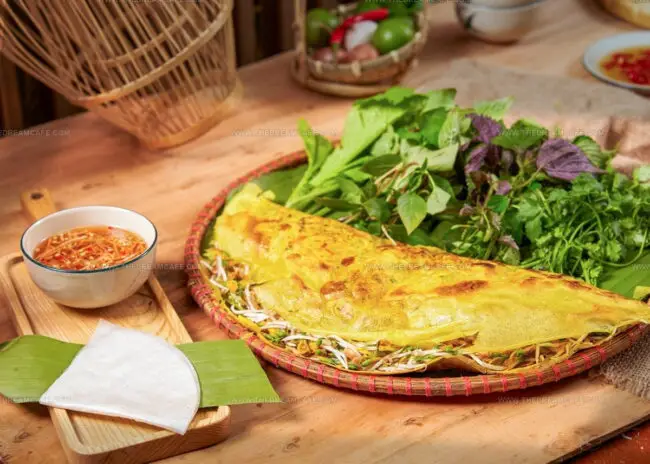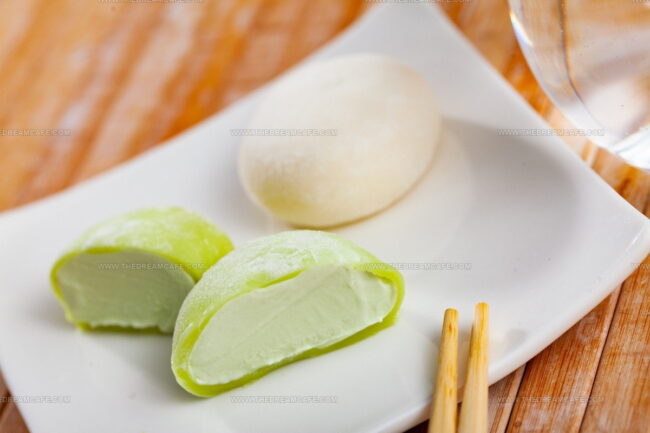Rice Flour or Glutinous: Understand the Key Uses
Rice flour has become increasingly popular among health-conscious home bakers and those with dietary restrictions.
Versatile ingredients serve as excellent gluten-free alternatives to wheat flour in many recipes, from crispy tempura to delicate pastries.
The fine powder, made from finely milled rice grains, adds a distinctive lightness to baked goods that many people find appealing.
Regular rice flour differs from its cousin, glutinous rice flour, despite both coming from the same plant family.
Most Asian cuisines have incorporated these ingredients for centuries, creating everything from savory dumplings to sweet mochi treats.
When shopping for either type, you can find them in most supermarkets' international aisles or specialty food stores.
Understanding the unique properties of each flour type opens up a world of culinary possibilities for your kitchen experiments.
All You Need to Know About Rice Flour
Rice flour comes from grinding medium to long-grain white or brown rice kernels into a fine powder. Many cooks appreciate this gluten-free option for its ability to create stretchy, cake-like textures in various dishes.
Good news for vegans - rice flour fits perfectly into plant-based cooking without any concerns. This versatile ingredient works wonderfully in baked goods, creates crispy frying batters, and serves as an excellent thickener in sauces.
Throughout Asian cuisine, rice flour plays a starring role in numerous authentic dishes and accompaniments. Anyone exploring Asian cooking will quickly notice how rice appears in countless forms.
The marketplace offers two primary varieties - white rice flour and brown rice flour - each bringing distinct characteristics to your cooking.
White Rice Flour
Rice flour comes from different varieties like indica, japonica, sinandomeng, dinorado, and angelica, with the bran removed before grinding to create a smooth, light texture. Its paperwhite color and mild, almost tasteless flavor make it perfect for light batters and as a wheat flour substitute in gluten-free baking.
Many Asian noodles and rice cakes rely on this ingredient as their foundation. For soups and stews, it works as a thickener, though not quite as effectively as brown rice flour.
Making your own at home is really simple once you know the process - our detailed tutorial shows exactly how to create this versatile pantry staple.
Brown Rice Flour
Brown rice flour comes from grinding whole grain brown rice without removing the bran, giving it a creamy white color and denser texture than white rice flour. This slightly sweet and nutty flour works perfectly in sweet baked goods, unlike its tasteless white rice counterpart.
Many cooks value it for thickening stews, soups, sauces, and gravies where it outperforms white rice flour. Home chefs often select brown rice flour for frying foods because of its higher nutrient content.
Due to its heavier texture, recipes using this flour require more liquid to achieve the right consistency, and it spoils faster than white rice flour.
For better results in your gluten-free baking, try combining brown rice flour with lighter options like white rice or tapioca flour to balance the density.
What is Glutinous Rice Flour?
Glutinous rice flour comes from milling cooked and dried short or long-grain glutinous rice kernels. High levels of waxy starch molecules give this flour its characteristic stickiness, moisture, and firmness when heated.
Many Asian cultures use their own varieties of sticky rice - Japanese mochigome, Korean chapssal, Vietnamese gao nep, and Filipino malagkit are all popular choices for making this special flour. Despite its name, glutinous rice flour doesn't contain gluten nor does it taste sweet; instead, it has a neutral flavor much like white rice flour.
People also value this flour for its uniquely chewy texture, which creates delicious treats such as mochi, dango, boba pearls, and palitaw. They can use this versatile ingredient to make dumplings or thicken gravies and sauces more effectively than brown rice flour can.
Rice Flour vs. Glutinous Rice Flour: The Similarities
Rice flour and glutinous rice flour are very similar in their uncooked form; they both have a fine, powdery texture and a solid white color (except brown rice flour). They are nearly identical in weight, with 1 cup of either weighing about 4.6 ounces, and both have a neutral taste.
Both types work well as thickening agents but must be fully cooked before eating.
Importantly, they are naturally gluten-free, making them safe choices for gluten-free diets.
Differences Between Rice Flour and Glutinous Rice Flour
Rice flour and glutinous rice flour may seem similar at first glance, but they have key differences worth noting. Knowing which one to use can make all the difference in your cooking results!
First, let's check the table below to find out the differences.
| Aspect | Rice Flour | Glutinous Rice Flour |
| Rice Cultivar | Made from medium or long-grain non-glutinous rice. | Made from short or long-grain sticky (glutinous) rice. |
| Texture When Cooked | Cake-like, less chewy; better for baking and frying. | Chewier texture; commonly used in desserts. |
| Nutritional Value | Higher in fiber, calcium, iron, and potassium. | Slightly higher in protein; fewer minerals. |
| Calories and Carbs | Similar calories and total carbs to glutinous rice flour. | Similar calories and total carbs to rice flour. |
Rice Cultivar
The primary difference between rice flour and glutinous rice flour lies in the type of rice used to make them. Rice flour is made from medium or long-grain non-glutinous rice, which has a firmer texture and less starch content.
In contrast, glutinous rice flour comes from short or long-grain sticky rice, known for its high starch content that gives it a distinctive sticky and chewy quality when cooked.
Texture
Because of the different rice varieties, the texture of the two flours varies significantly once cooked. Rice flour produces a cake-like texture that is softer and less chewy, making it ideal for baking and frying applications.
Glutinous rice flour becomes much chewier and stickier, which is why it’s commonly used in desserts and recipes that require a chewy consistency.
Nutritional Differences
Nutritionally, rice flour and glutinous rice flour are similar in calories and carbohydrate content. However, rice flour is richer in dietary fiber, calcium, iron, and potassium, providing more minerals and health benefits.
Glutinous rice flour contains a slightly higher amount of protein but generally has fewer minerals compared to rice flour.
Here is nutrient info showed in a brief table.
| Nutrient (per 100g) | White Rice Flour | Glutinous Rice Flour |
| Calories | 366 kcal | 367 kcal |
| Total Fat | 1.4 g | 0 g |
| Total Carbs | 80 g | 80 g |
| Dietary Fiber | 2.4 g | 0 g |
| Sugar | 0.1 g | 0 g |
| Protein | 6 g | 6.7 g |
| Calcium | 10 mg | 0 mg |
| Iron | 0.4 mg | 0 mg |
| Potassium | 76 mg | Approx. 10 mg |
Alternatives for Rice Flour and Glutinous Rice Flour
When cooking or baking, you might need substitutes for rice flour or glutinous rice flour, especially if you’re dealing with texture or flavor preferences, dietary restrictions, or availability issues. Several flours and starches can stand in, each with its own characteristics.
Here is a ratio table to substitute rice flour and glutinous rice flour.
| Substitute | Replacement Ratio for Rice Flour | Replacement Ratio for Glutinous Rice Flour |
| Potato Starch | 1:1 (best combined with other flours) | 1:1 (use sparingly; can affect chewiness) |
| Tapioca Flour | 1:1 | 1:1 (excellent for sticky texture) |
| Almond Flour | 1:1 (may need to adjust liquids) | Not recommended (texture differs significantly) |
| Sorghum Flour | 1:1 (may result in denser texture) | Not ideal (texture not sticky or chewy) |
| Cornstarch | 1:1 (for thickening only, not baking) | 1:1 (for thickening; not a good baking substitute) |
Potato Starch
Potato starch is a fine, white powder extracted from potatoes. It has excellent thickening power and gives a light, fluffy texture to baked goods.
It is often used to improve the softness and moisture retention in gluten-free baking.
Potato starch can replace rice flour in many recipes, particularly when combined with other flours to balance texture, but it has little protein and can make products too soft if used alone.
Tapioca Flour
Also known as tapioca starch, this is derived from cassava root and has a very neutral taste.
Tapioca flour offers chewiness and elasticity, making it a good substitute for glutinous rice flour in recipes requiring a sticky texture, such as certain desserts and dumplings.
It also works well as a thickener and helps improve the stretchiness and moisture in gluten-free baking.
Sorghum Flour
Sorghum flour comes from a cereal grain and has a mild, slightly sweet flavor. It is often used in gluten-free baking as a whole grain flour that adds structure and body.
Sorghum flour can partially replace rice flour in baked goods, but because of its higher fiber content, it may result in a denser texture if used alone.
Almond Flour
Almond flour is made from finely ground blanched almonds and has a rich, nutty flavor. Unlike rice or glutinous rice flour, almond flour contains fat and protein, which adds density and moisture to baked goods.
It does not replicate the texture of rice flours but can be a nutritious substitute in recipes where a denser, richer texture is acceptable, like in cakes or cookies.
Cornstarch
Cornstarch is a fine starch extracted from corn and is widely used as a thickening agent. It provides a smooth texture and helps with binding but lacks protein and fiber.
Cornstarch can replace rice flour in thickening sauces and soups but is less ideal for baking unless combined with other flours for structure.
The Best Brands of Rice Flour And Glutinous Rice Flour
Bob’s Red Mill is a highly trusted brand known for its quality and consistency. They provide both rice flour and sweet (glutinous) rice flour that are gluten-free and finely milled, making them perfect for baking and cooking.
Mochiko, produced by Shirakiku, is famous especially for its glutinous rice flour, which is a staple in many Asian desserts like mochi.
Anthony’s Goods offers organic and non-GMO options for both rice flour and glutinous rice flour.
JFC is a brand often found in Asian grocery stores that supplies both types of rice flour. They are known for affordability and authentic quality.
Thai Kitchen also offers both rice flour and glutinous rice flour, catering to cooks looking for authentic ingredients for Asian cooking.
Rice Flour Dishes That’ll Win Your Heart
Rice flour is an important ingredient in many recipes. The light, somewhat sweet flavor blends perfectly into both savory meals and sweet treats without overpowering other ingredients.
Rice Flour Muffins
Muffins are beloved morning treats that satisfy many breakfast cravings. Rice flour makes a great substitute for regular flour, allowing anyone with gluten concerns to still enjoy these delicious goodies.
The range of possible flavors is almost endless - from chocolate chip to blueberry, banana nut to lemon poppy seed - so you can always find or create a version that matches your mood or taste preferences.
Banh Xeo (Vietnamese Crepes)
Making a delicious Vietnamese banh xeo at home is easier than most people think. These crispy "sound crepes" got their fun name from the sizzling noise the batter makes when it hits the hot pan.
The golden pancakes are filled with savory pork, shrimp and bean sprouts that create an amazing flavor combination. For the best experience, wrap each piece in lettuce leaves along with fresh herbs before dipping into the tangy fish sauce.
Many food lovers consider this dish a perfect balance of textures - from the crunchy edge to the tender filling. Your family will ask for seconds when you bring this authentic street food favorite to your dinner table.
Fresh Gluten-Free Pasta
Rice flour does double duty as a key ingredient in traditional Asian noodles and as a perfect base for homemade gluten-free pasta. Making your own pasta at home is much simpler than most people realize, and it offers a fresh alternative to the store-bought options you might be used to.
The process requires just a few basic ingredients and some straightforward techniques that anyone can master with a little practice. Once you try this homemade approach, the difference in taste and quality becomes immediately apparent, making it worth the small extra effort involved.
Glutinous Rice Flour Recipes to Make At Home
Glutinous rice flour stands out as a key ingredient in countless Asian desserts that can break your dessert routine. The fine powder creates that signature bounce and stretch once cooked, making your treats irresistibly fun to eat.
Mochi Ice Cream
Mochi ice cream combines traditional Japanese mochi with cool, creamy ice cream for a delightful treat. Making these little dessert balls isn't as hard as you might think - just wrap small scoops of your favorite ice cream inside a thin layer of sweet rice flour dough.
The chewy outer shell paired with the smooth ice cream center creates an amazing texture contrast that's really satisfying. Kids love helping roll these treats, and they're perfect for summer gatherings or as a fun weekend project.
Many stores now carry pre-made versions, but nothing beats the fresh taste of homemade mochi ice cream that you can customize with any flavor combinations.
Sesame Balls
Fried sesame balls have become a beloved Chinese dessert that many families enjoy during Lunar New Year celebrations. Their golden, crispy exterior coated with tiny sesame seeds gives way to a delightfully chewy rice dough and sweet filling inside.
Most people can't help but reach for another once they taste the perfect balance of textures and flavors in each bite. Making these treats at home might seem challenging, but the process is quite rewarding as your kitchen fills with their wonderful aroma.
Sesame balls remain warm for hours after frying, making them perfect for gatherings where guests can snack on them throughout the festivities.
Royal Bibingka (Filipino Coconut Rice Cake)
Royal bibingka takes the traditional Filipino coconut rice cake to new heights with its irresistible chewy texture and delightful flavor combination. This special treat blends the richness of coconut with just the right amount of sweetness and a savory cheese topping that makes it impossible to stop at just one piece.
Many people fall in love with how the ingredients work together to create something truly special - much more than just an ordinary rice cake.
Got Questions? We’ve Got Solutions
1. Can I substitute rice flour for glutinous rice flour in recipes?
No, they're not interchangeable. Rice flour creates crispy textures while glutinous rice flour gives a sticky, chewy result. Using the wrong one will significantly change your dish's texture.
2. Why is glutinous rice flour sticky despite being gluten-free?
The stickiness comes from amylopectin, a type of starch abundant in glutinous rice. It has nothing to do with gluten - both flours are completely gluten-free and safe for people with celiac disease.

